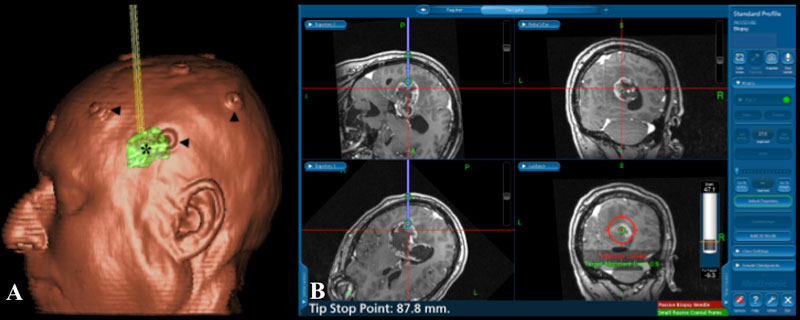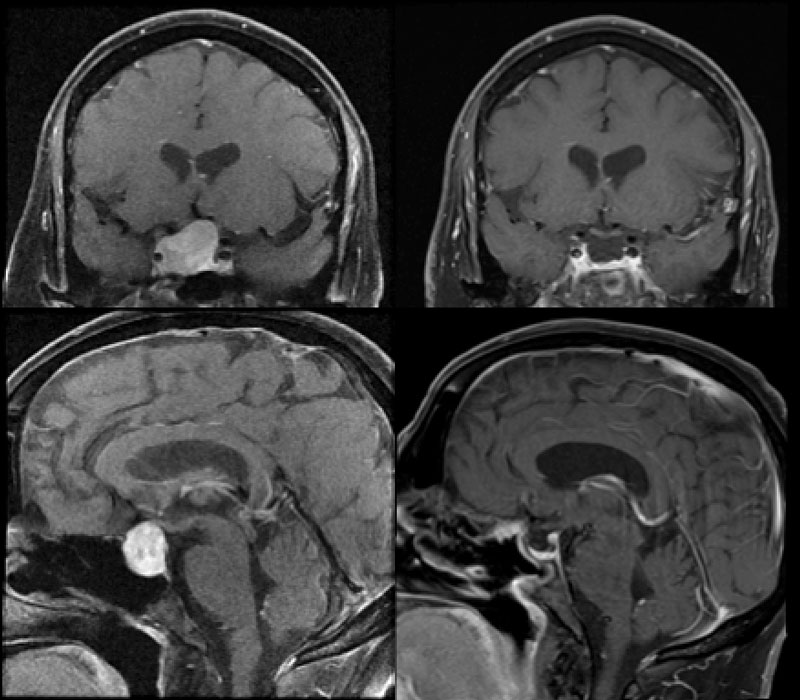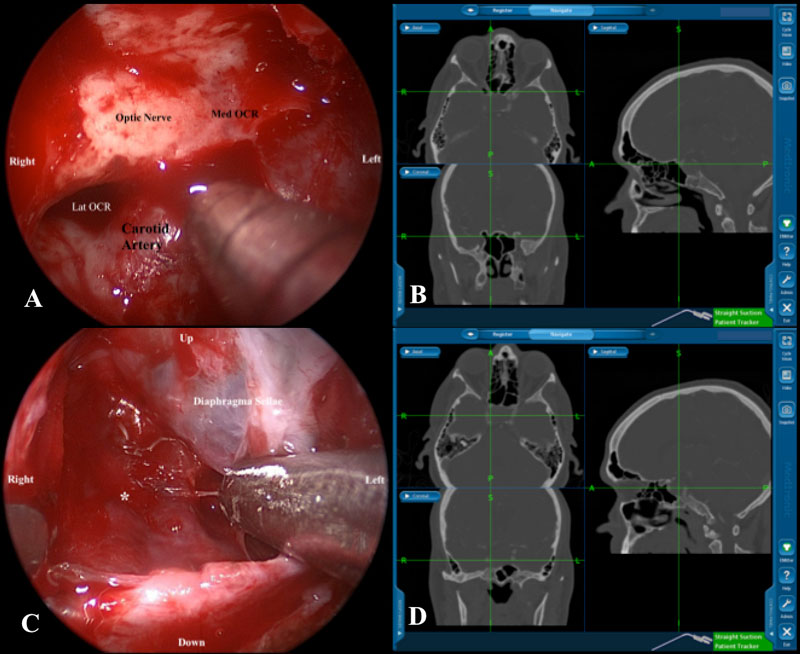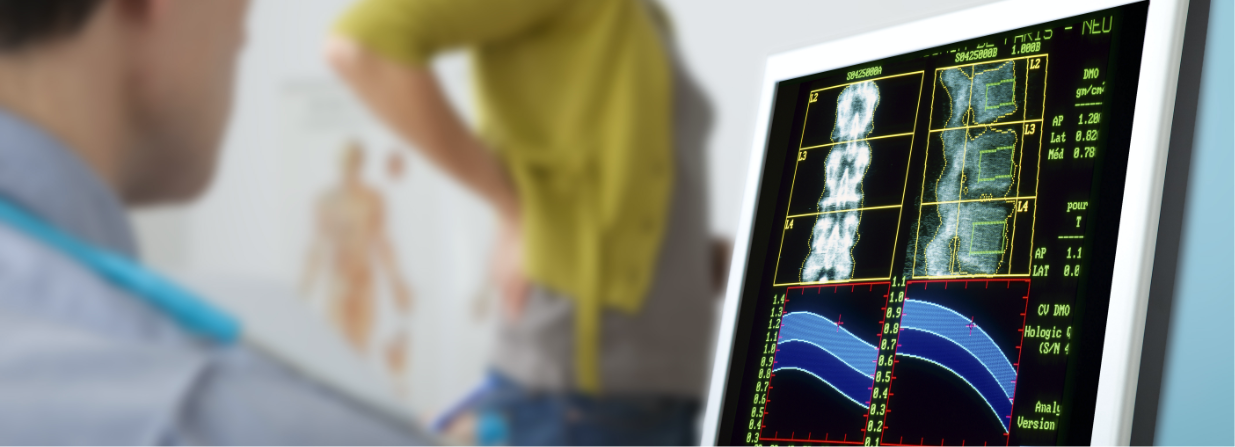This technology has been present for over 15 years and links patient anatomy in the operating room to an imaging study obtained expressly for surgical planning immediately prior to operation. This device occasionally requires the placement of ‘fiducials‘ (Figure 1) or markers that are affixed to the patient with a gentle adhesive prior to obtaining the planning MR; these markers are identifiable on a computer monitor in surgery and allow for correlation of the patient’s head to its representation on imaging. Alternatively, the unique facial contours of a patient are defined by ‘tracing’ the face with a laser or probe thereby obviating the need to place fiducials pre-operatively.

Figure 1ab
The left image ‘a’ is a rendering of a patient on a navigational workstation with fiducials indicated by arrowheads. The markers are affixed prior to the acquisition of an MR or CT and serve as localizing points visualized on imaging and allow for a correlation with real anatomy in the operating room. The asterisk indicates location of tumor. The right image ‘b’ demonstrates the proposed trajectory of a biopsy cannula in a separate patient to obtain a sample of a large deep-seated tumor.
During surgery, surgical tools are identified by optical cameras and are overlain on a monitor demonstrating the patient’s MR imaging. This tool permits more precise incisions, skull-openings (craniotomy) and dissection within the nervous system as well as guiding tumor removal. Navigational information serves as a useful adjunct but does not replace the experience and knowledge of the surgeon. (Figure 2,3).

Figure 2
This 48 year old man presented with visual loss and a non-functioning pituitary tumor with lateral displacement of the medial wall of the cavernous sinus. Endonasal endoscopic surgery was performed with complete resection (left top and bottom preoperative, right top and bottom postoperative).

Figure 3
Intraoperative images of the case noted above demonstrate the utility of navigation. A,B: Top row with suction probe just below with optic canal and anterior to the parasellar carotid artery. C,D: Lower row with probe within the sella turcica just medial to the intra-cavernous carotid artery deep to the medial wall of the cavernous sinus (Medial OCR: Medial Optico-carotid recess, Lat OCR: Lateral Optico-carotid recess, *: Carotid artery within the cavernous sinus).

